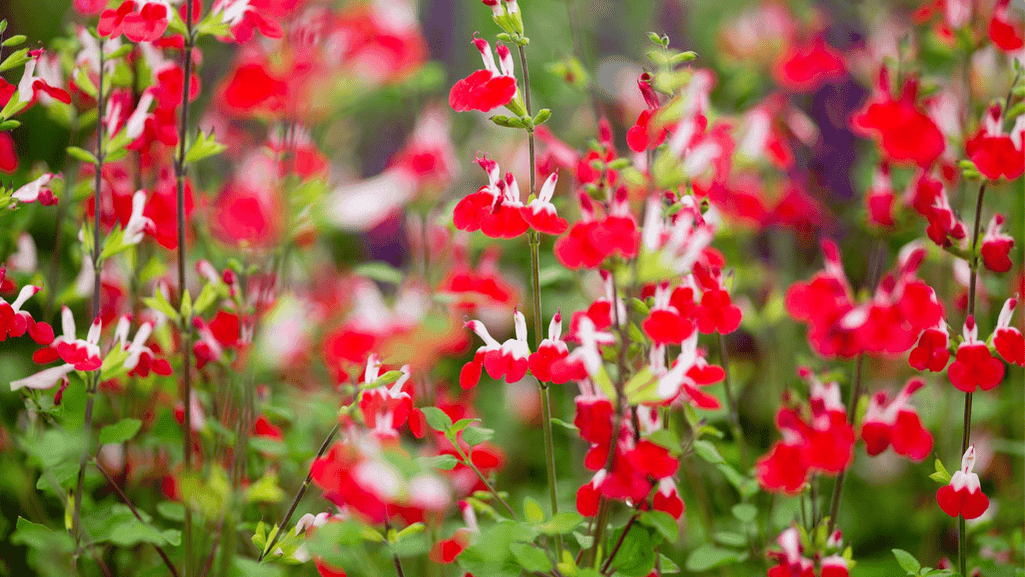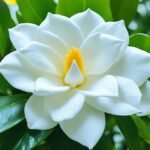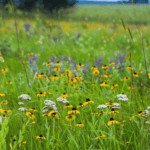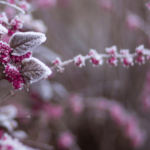Salvias in winter are beloved garden treasures that bring vibrant colors and attract pollinators throughout the growing season. However, when winter approaches, these plants require special attention to ensure their survival. While some salvias are naturally hardy, many varieties are sensitive to cold temperatures and need protection to thrive year after year. This comprehensive guide will walk you through everything you need to know about caring for salvias in winter, from identifying hardy varieties to implementing effective protection strategies.
Salvias with winter protection can survive even in colder climates
Understanding Salvia Cold Sensitivity and Climate Zones
Salvias originate from diverse regions around the world, resulting in varying levels of cold tolerance. Their winter hardiness largely depends on the specific variety and your local climate conditions. In USDA zones 8-11, many salvias can survive winter with minimal protection, while gardeners in zones 4-7 need to take more extensive measures to protect their plants.

USDA hardiness zones determine which salvias need winter protection
The primary factors that affect salvia winter survival include:
- Temperature extremes: Most tender salvias can be damaged or killed by temperatures below 25°F (-4°C)
- Duration of cold: Brief cold snaps are less damaging than extended freezing periods
- Soil moisture: Wet, cold soil increases the risk of root rot and frost heaving
- Wind exposure: Cold, drying winds can desiccate and damage plants
- Snow cover: While snow can insulate plants, heavy snow can break stems
Understanding your specific climate challenges is the first step in developing an effective winter protection strategy for your salvias.
Identifying Hardy vs. Tender Salvia Varieties
Not all salvias require the same level of winter protection. Knowing which varieties you have is crucial for providing appropriate care. Here’s how to distinguish between hardy and tender salvias:
Hardy Salvia Varieties (Zones 4-7)
- Salvia nemorosa (Woodland Sage): Extremely cold-hardy to zone 4, including popular cultivars like ‘Caradonna’ and ‘May Night’
- Salvia x sylvestris: Hardy to zone 4, including ‘Blue Hill’ and ‘Viola Klose’
- Salvia officinalis (Common Sage): Culinary sage varieties are generally hardy to zone 5
- Salvia verticillata (Lilac Sage): Hardy to zone 5, including ‘Purple Rain’
Tender Salvia Varieties (Zones 8-11)
- Salvia greggii (Autumn Sage): Hardy only to zone 7-8, including ‘Hot Lips’
- Salvia elegans (Pineapple Sage): Tender perennial hardy only to zones 8-10
- Salvia leucantha (Mexican Bush Sage): Hardy only to zone 8
- Salvia guaranitica (Blue Anise Sage): Hardy to zone 7-8, including ‘Black and Blue’

Visual comparison of hardy Salvia nemorosa (left) and tender Salvia greggii (right)
To identify your salvia varieties, look for these distinguishing characteristics:
- Woody stems: Many tender salvias have woody stems (like S. greggii)
- Leaf retention: Tender varieties often retain leaves in winter in mild climates
- Aromatic foliage: Many tender salvias have strongly scented leaves
- Growth habit: Hardy salvias often form basal rosettes in winter
Not Sure About Your Salvia Variety?
Take a photo of your plant and use a plant identification app or consult with your local garden center for accurate identification.
Find Your Local Garden Center
Step-by-Step Instructions for Overwintering Salvias
Proper winter preparation can significantly increase the survival rate of your salvias. Follow these steps based on your specific varieties and climate conditions:
1. Mulching Techniques for Ground-Planted Salvias

Apply mulch around the base but avoid covering the crown
Mulching is one of the most effective ways to protect salvias in winter:
- Wait until after the first frost before applying mulch to allow plants to enter dormancy naturally
- Clear debris from around the plant base to prevent disease
- Apply 2-3 inches of mulch around the base of the plant, extending outward to cover the root zone
- Keep mulch away from the crown (center) of the plant to prevent rot
- Use organic materials like straw, pine needles, shredded leaves, or bark chips
For extra protection in zones 4-6, consider adding a layer of evergreen boughs over the mulch after the ground freezes to provide additional insulation.
2. Pruning Guidelines for Winter

Proper pruning helps salvias survive winter and promotes spring growth
Pruning practices vary depending on the salvia type:
Hardy Herbaceous Salvias:
- Wait until spring to cut back
- Leave 3-4 inches of stems standing through winter
- Dead foliage provides natural protection
Tender Woody Salvias:
- Avoid hard pruning in fall
- Remove only spent flower stalks
- Save major pruning for spring after danger of frost
Important: Never cut salvias back to the ground in fall, especially woody varieties. The stems provide protection for the crown and help prevent water from collecting around the base.
3. Container Care for Potted Salvias

Move potted salvias to a protected location for winter
Salvias in containers are more vulnerable to cold because their roots are less insulated. Follow these steps:
- Move pots to a sheltered location such as against a south-facing wall, under eaves, or in an unheated garage or shed
- Group containers together to create a microclimate that retains heat
- Insulate the pots by wrapping them with bubble wrap, burlap, or horticultural fleece
- Elevate containers on bricks or pot feet to improve drainage
- Water sparingly during winter, only when soil is completely dry
For extremely tender varieties in cold climates (zones 4-6), consider bringing pots indoors to a cool, bright location like a sunroom or cool greenhouse where temperatures stay above freezing.
4. Using Protective Covers

Frost cloth provides protection while allowing air circulation
For additional protection during severe cold snaps:
- Use breathable materials like horticultural fleece, frost cloth, or burlap
- Install supports (stakes or hoops) to prevent covering from touching plants
- Secure edges with rocks or soil to prevent wind from displacing covers
- Remove covers during daytime when temperatures rise above freezing
- Avoid plastic sheeting which can create damaging condensation
Essential Winter Protection Supplies
Get everything you need to protect your salvias this winter. Quality supplies make all the difference in plant survival rates.
Shop Winter Garden Supplies
Common Mistakes to Avoid When Preparing Salvias for Winter

Avoid these common mistakes to ensure salvia survival
Pruning Mistakes
- Cutting back too severely in fall, removing protective growth
- Pruning during wet weather, which can spread disease
- Cutting into woody stems of tender varieties before spring
- Removing all foliage that could otherwise provide insulation
Watering Mistakes
- Overwatering in late fall, which can lead to root rot
- Stopping watering too early before plants are dormant
- Watering during freezing temperatures
- Neglecting potted salvias during winter dry spells
Protection Mistakes
- Applying mulch too early before plants enter dormancy
- Piling mulch against stems, causing rot
- Using non-breathable covers like plastic
- Forgetting to secure covers against wind
General Care Mistakes
- Fertilizing in late fall, which stimulates vulnerable new growth
- Transplanting close to winter
- Ignoring drainage issues that become critical in winter
- Failing to identify your specific salvia varieties and their needs
Warning: The most common cause of winter salvia loss is a combination of cold temperatures and wet soil. Always ensure proper drainage before winter arrives.
Reviving Salvias in Spring After Winter Dormancy

Healthy salvias showing new growth in early spring
As temperatures warm in spring, it’s time to help your salvias transition back to active growth:
1. Assessing Winter Damage
Before taking action, properly assess your plants:
- Be patient – some salvias are slow to emerge in spring
- Wait until danger of frost has passed and soil has warmed
- Look for signs of life at the base of the plant and along stems
- Scratch woody stems with your fingernail – green underneath indicates living tissue

Green tissue under bark indicates the stem has survived winter
2. Spring Pruning Techniques
Proper spring pruning rejuvenates salvias and promotes healthy growth:
- Remove winter protection gradually as temperatures warm
- Cut back dead stems to just above the first signs of new growth
- For woody salvias, prune back to where stems show green tissue
- Shape the plant by cutting back by 1/3 to encourage bushiness
- Clean up all debris to prevent disease

Cut back to just above new growth in spring
3. Post-Winter Care
Help your salvias recover and thrive with these spring care tips:
- Apply a balanced, slow-release fertilizer once new growth is established
- Water deeply but infrequently to encourage deep root growth
- Add a thin layer of compost around plants to provide nutrients
- Monitor for pests that may attack vulnerable new growth
- Divide overcrowded plants in early spring for better air circulation

Properly overwintered salvias reward gardeners with vigorous spring growth
Get Seasonal Gardening Reminders
Never miss the right time to care for your salvias. Subscribe to our seasonal gardening newsletter for timely tips and reminders.
Subscribe to Seasonal Updates
Frequently Asked Questions About Salvias in Winter
How cold can salvias tolerate before being damaged?
Cold tolerance varies significantly by variety. Hardy salvias like Salvia nemorosa can survive temperatures down to -20°F (-29°C) in zones 4-5, while tender varieties like Salvia greggii may be damaged at temperatures below 25°F (-4°C). The duration of cold is also important – brief cold snaps are less damaging than extended freezing periods.
Can I overwinter salvias indoors as houseplants?
Yes, tender salvias can be overwintered indoors, but they need specific conditions. Place them in a cool location (40-50°F/4-10°C) with bright light. Reduce watering significantly and don’t fertilize. Most salvias will not thrive as permanent houseplants due to their light requirements and natural dormancy needs, but they can survive winter indoors before returning outside in spring.
My salvia looks dead after winter. Should I pull it out?
Be patient before removing seemingly dead salvias in spring. Many varieties, especially in colder zones, can be very slow to emerge. Wait until at least late spring (when soil has thoroughly warmed) before deciding a plant is truly dead. Check for signs of life by gently scratching the base of stems – if you see green tissue, the plant is still alive and should eventually produce new growth.
Should I cover my salvias during a frost?
For tender salvias during unexpected late spring or early fall frosts, covering plants overnight can prevent damage. Use breathable materials like frost cloth or old bed sheets, supported so they don’t touch the foliage. Remove covers in the morning when temperatures rise. For established hardy salvias during their normal dormant period, covering for occasional frosts is unnecessary.
Can I take cuttings as insurance against winter loss?
Taking cuttings in late summer or early fall is an excellent strategy, especially for tender or expensive varieties. Root 4-6 inch stem cuttings in a well-draining medium, keep them in a bright, frost-free location through winter, and plant them out after danger of frost has passed in spring. This provides backup plants if your garden specimens don’t survive winter.
Conclusion: Enjoying Salvias Year After Year

Proper winter care ensures years of beautiful salvia blooms
With the right winter protection strategies, your salvias can return year after year, becoming more established and spectacular with each passing season. By understanding the specific needs of your salvia varieties and your local climate conditions, you can develop an effective winter care routine that ensures these valuable garden plants survive and thrive.
Remember that even if you lose some plants despite your best efforts, many salvias are relatively affordable to replace, and the experience helps you learn which varieties are best suited to your specific garden conditions. With each passing year, you’ll develop a collection of salvias that are well-adapted to your climate and care routine.
Ready to Expand Your Salvia Collection?
Discover new salvia varieties selected for your growing zone. From cold-hardy natives to exotic tender species, find the perfect additions for your garden.
Explore Salvia Varieties






